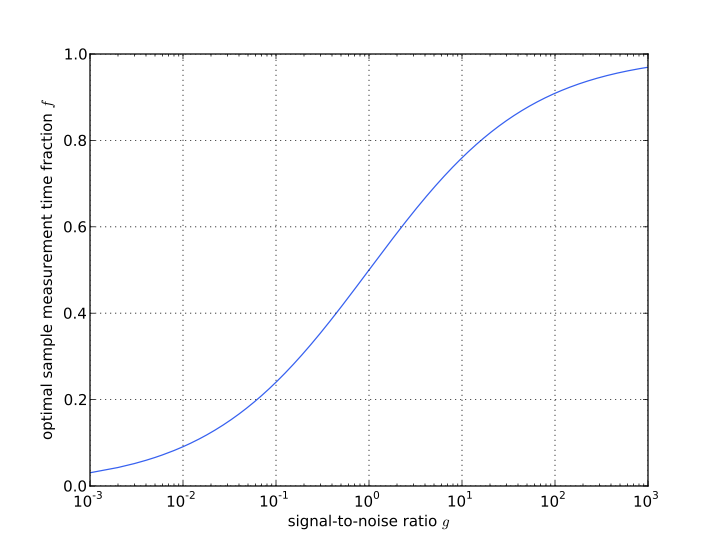
Often, especially when measuring on big facilities, you are given a limited amount of time. So when it comes to measuring the sample and the background, this limited time has to be divided between a measurement of the sample, and a measurement of the background.
Normally, one would spend about 50% of the time on a sample, and 50% on the background, or even more time on the background “because the counts are so low” (I know, I did the same!). There must be a better way to calculate the optimum division of time!
So me and a colleague, Samuel Tardif, spent a little bit of time jotting down some equations, and plotting the result. The result is that for large differences in the signal-to-noise ratio (c.q. sample count rate to background count rate), significant reductions in uncertainty can be obtained through better division of time for any small-angle scattering measurement.
In the case of a Bonse-Hart camera or a step-scan small-angle scattering measurement, each measurement point can be tuned to the optimal dwell time for the sample and background, after a quick initial scan to determine the signal-to-noise ratio at each point. Please let me know how it works for you! The calculation can be checked from this document where we wrote up the results: ideal_background


Leave a Reply